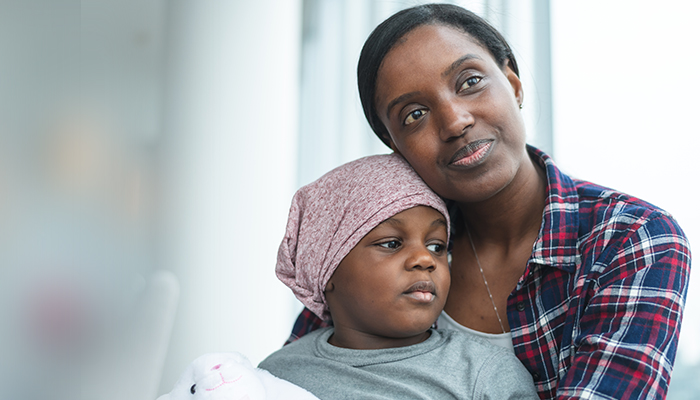HOW CAN WE HELP YOU? Call 1-800-TRY-CHOP
In This Section
Do Very Sick Children’s Families Have More Mental, Physical Needs?

Family members of children with life-threatening conditions are 50 to 70 percent more likely than peers to suffer mental and physical issues.
mccannn [at] chop.edu (By Nancy McCann)
The findings:In the largest study to date to examine specific health effects faced by families of very sick children and adolescents, researchers in the Clinical Futures, a CHOP Research Institute Center of Emphasis, discovered that parents and siblings of a child with one of four types of life-threatening conditions (LTCs) have significantly higher rates of healthcare encounters, diagnoses, and medication prescriptions, when compared with families who did not have a child with one of these conditions.
Prior research showed that the four LTCs measured — substantial prematurity, critical congenital heart disease, cancer, or conditions resulting in severe and progressive neurological impairment — were particularly stressful for families.
Parents and siblings of children with these serious illnesses were between 50 percent to 70 percent more likely to use healthcare (hospital admissions, emergency department visits, and outpatient urgent care), and to receive diagnoses (regarding mental health, physical health, and physical trauma-related) and medication prescriptions than were family members of control children. This degree of elevation of case families compared to control families was similar for mothers and fathers, and for sisters and brothers.
Among the four different sets of medical conditions, the elevations were highest for neurological and oncological case families (in the range of 60 percent to 70 percent) and lower for cardiac and prematurity case families (in the range of 20 percent to 30 percent). Bereavement increased the degree of elevation.
Why it matters:Despite concerns regarding the potentially harmful physical and mental health effects on family members who have a child or sibling with a LTC, few studies have examined empirical measures of health outcomes among these family members. Prior studies revealed lower resilience, greater post-traumatic distress, higher emotional distress, and lower overall quality of life, but were limited by self-reported outcomes, small sample sizes, and focusing on one condition, usually cancer.

Chris Feudtner, MD, PhD, MPH
First author Chris Feudtner MD, PhD, MPH, is chief of the Division of General Pediatrics, director of the Department of Medical Ethics, core faculty member in the Clinical Futures, and research director of the Justin Michael Ingerman Center for Palliative Care. Clinical Futures Behavioral Researcher Douglas Hill, PhD, was senior author.
How they did it:In a retrospective matched cohort study, which included four cohorts (prematurity, cardiac, oncologic, neurologic) correlating to the specific LTCs, families of children with these conditions were matched to families of similar-aged children without these LTCs, and the mental and physical health of parents and siblings were compared, as measured by the diagnoses and prescriptions they received. The study team used a de-identified claims dataset from a large, commercial health insurance company, observed from July 2015 through December 2017 of families located across the United States. In total, the study looked at 6,909 case and 18,619 control children and their families.
Quick thoughts:“When illness strikes a child, it strikes a family,” Dr. Feudtner said. “We need to recognize this fact and rise to the challenge of providing better care to the other family members, as well as the ill child. Interventions for these parents and siblings aiming to safeguard their mental and physical well-being are warranted.”
Where the study was published:The study appears in JAMA Network Open.
Want to learn more?
Read more in this CHOP press release.


